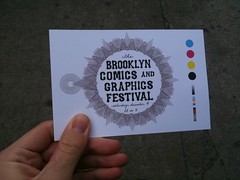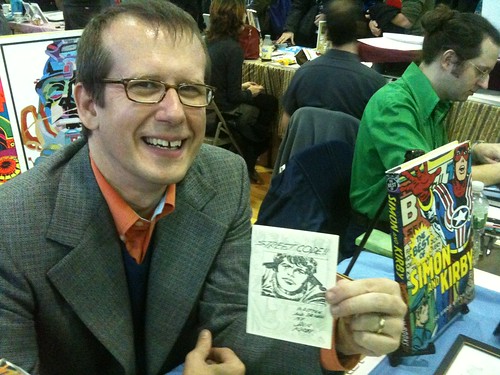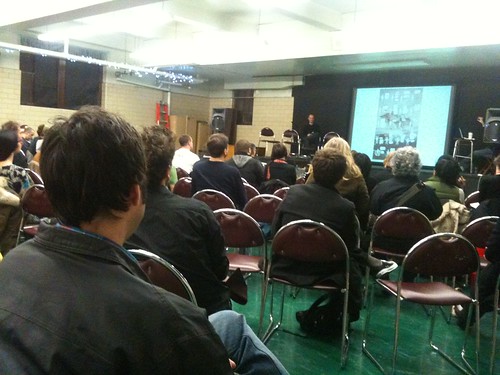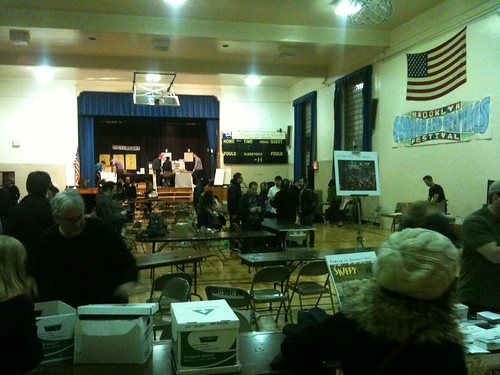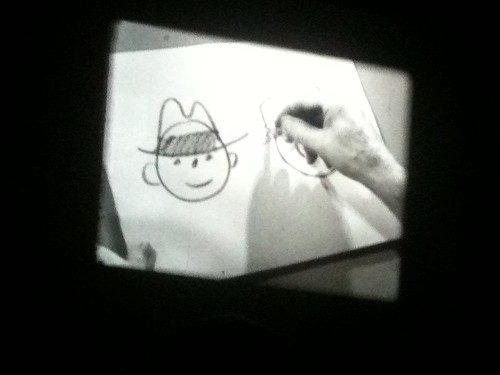 On display at the Kentler is Haspiel's early character sketches, and the original page layouts and final pre-production art for a handful of pages from the graphic novel as well as the 1960s pencil work of Inverna Lockpez herself. Her drawings from the period are featured as a part of the comic's narrative and are used to mark each chapter's beginning. A small pamphlet with an essay accompanying the exhibit written by PW Beat's Calvin Reid is only available at the gallery. The space isn't used as well as I might imagine, but the works themselves and the way they are organized makes the trip well-worth it. Haspiel's work reminds me of Steve Rude's: a delicate touch with pencil but a strong smooth hand with ink. Pretty much the whole artistic package. Or at least what I think of as the whole package: A mastery of both of the two tools most utilized to make comics. Seeing Haspiel's strong line in person is a TRIP. Even better is seeing the progression from sketched outline to finished comics page right in front of your eyes. And to see Lockpez's striking abstract drawings that are only here thanks to a network of secret art saviors who rescued some of the work confiscated by Fidel's regime is no laughing matter either. Her images remind me of the graphic style of one comics art giant of the 1960s and 1970s, Jack Kirby. The exhibit is small and a quick walk-through is more than enough, leaving you with a hunger to read the graphic novel itself and learn about one of the saddest political crises of the Cold War era.
On display at the Kentler is Haspiel's early character sketches, and the original page layouts and final pre-production art for a handful of pages from the graphic novel as well as the 1960s pencil work of Inverna Lockpez herself. Her drawings from the period are featured as a part of the comic's narrative and are used to mark each chapter's beginning. A small pamphlet with an essay accompanying the exhibit written by PW Beat's Calvin Reid is only available at the gallery. The space isn't used as well as I might imagine, but the works themselves and the way they are organized makes the trip well-worth it. Haspiel's work reminds me of Steve Rude's: a delicate touch with pencil but a strong smooth hand with ink. Pretty much the whole artistic package. Or at least what I think of as the whole package: A mastery of both of the two tools most utilized to make comics. Seeing Haspiel's strong line in person is a TRIP. Even better is seeing the progression from sketched outline to finished comics page right in front of your eyes. And to see Lockpez's striking abstract drawings that are only here thanks to a network of secret art saviors who rescued some of the work confiscated by Fidel's regime is no laughing matter either. Her images remind me of the graphic style of one comics art giant of the 1960s and 1970s, Jack Kirby. The exhibit is small and a quick walk-through is more than enough, leaving you with a hunger to read the graphic novel itself and learn about one of the saddest political crises of the Cold War era.Again, this exhibit is only going to stay open tomorrow, Sunday, between 12 noon and 5 PM. The Kentler International Drawing Space sits at 353 Van Brunt St in the Red Hook neighborhood of Brooklyn, NY and admission is free to all.
~ @JonGorga



